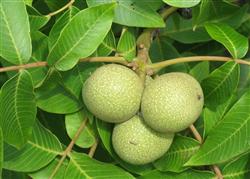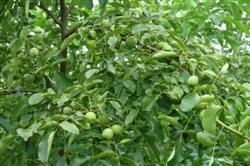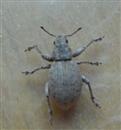How to manage walnut trees in June?

How to manage walnut trees in June? Please introduce the management method for the growth of walnut trees in June, but it is also the main period for the occurrence and damage of diseases and insect pests. Therefore, a good management in June is the key to promote the healthy growth and increase the yield of walnut trees in that year. There are four specific management points: unbinding the management of the grafted tree, the grafting interface of some branches grafted in spring has been fully healed, the film binding has obviously sunken, resulting in ligature marks, which must be removed in time. When the growth of the grafted shoot exceeds the height of the fixed stem, three upper buds with proper branching angle and relatively mature development are retained, and then the tip is cut off to promote it to divide into two or three lateral branches and form an umbrella crown ahead of time. Sparse and dense branches, multi-spike grafting or multi-bud panicle grafting will form over-dense buds, which need to be reasonably selected and cut off the redundant, over-dense and downward branches. In summer pruning in June, the growth of primary, secondary or tertiary lateral branches has reached a considerable length, and the tip can be cut off at the 60-80cm to promote the sprouting of 2mur3 lower branches, which can complete two years of branch growth in one year. Cut off the overdense and overlapping branches that were not cut off in April and May. Foliar fertilization is the most effective method to supplement trace elements, combined with pest control, zinc, boron, manganese, copper, iron, molybdenum and rare earth elements can be added during spraying. The spraying is mainly on the back of leaves, and the time is mainly in the morning and evening. Management of water, soil, fertilizer and grass ditches should be opened to drain waterlogging in areas with heavy viscosity and low-lying areas prone to stagnant water. The more suitable method for unintercropped garden is grass-mulching tillage, first using glyphosate and other inactive herbicides to remove malignant weeds, and then sowing leguminous forage, potato and other crops to make them become the main grass cover. Grass mulching tillage is beneficial to soil and water conservation, increase soil organic matter, maintain soil permeability, cultivate a large number of soil plants, animals and microorganisms, form local biodiversity, maintain garden ecological balance, improve soil fertility and reduce cost input to achieve sustainable soil utilization and development. Click to get more hickory planting techniques click to get more fruit planting techniques
- Prev

When will the walnuts be harvested?
When will the walnuts be harvested? Please introduce that the yield of walnut mainly depends on the volume of walnut and the weight of single fruit. When the walnut reaches the near ripening stage, the size of the fruit is basically fixed. There was no significant difference in vertical diameter, horizontal diameter and edge diameter of walnut in different harvest periods. However, the early harvest of the core.
- Next

How to control mango weevil disease?
How to control mango weevil disease? Mango weevil disease can be controlled by referring to the following methods: 1. Mango leaf-cutting weevil is widely distributed, adults feed on mango tender leaves, resulting in dry leaves; or female insects lay eggs on tender leaves and bite off tender leaves from the base, affecting plant growth. Prevention methods: 1 in...
Related
- Moge, come on! The staff of the peasant association in the producing area of cantaloupe were frightened when the crowd gathered.
- Causes and Solutions of low Fruit setting rate of Apple
- Symptoms and control measures of passion fruit virus disease
- Fruit growing lesson: how do apple orchards keep high yields?
- Can you build orchards in the mountains? What are the pros and cons?
- How to manage the coloring period of Crisson grape?
- This paper introduces the processing technology of two kinds of fig products.
- How much is a month for retired teachers in rural areas by 2020?
- How can strawberry planting increase sugar content? We should pay attention to management in many aspects.
- What are the cultivation techniques on how to improve the yield of golden fruit?

